Current Members
 Dr. Kevin Archibald, Ph.D.
Dr. Kevin Archibald, Ph.D.
Simons Foundation Postdoctoral Fellow
karchibald ‘at’ ucsb.edu
Google Scholar
Kevin is a biological oceanographer and ecosystem modeler interested in marine plankton and their impacts on global biogeochemistry and climate. He joined the Moeller Lab in December 2020 to model evolutionary change in mixotroph physiology, biogeochemistry, and global distribution in response to climate change. Kevin did his PhD at Woods Hole Oceanographic Institution with Scott Doney, Michael Neubert, and Heidi Sosik. During that time, he conducted a variety of modeling and field studies including how zooplankton diel vertical migration contributes to carbon export and how grazer switching promotes diversity in phytoplankton communities. Kevin earned his undergraduate degree in Quantitative Biology at the University of Delaware, where he studied migratory bird ecology with Jeff Buler by tracking movements using National Weather Service radar data. Outside the lab, Kevin’s hobbies include reading, hiking, and learning to cook.
 Raine Detmer
Raine Detmer
NSF Graduate Research Fellow
adetmer ‘at’ ucsb.edu
Raine is interested in both community ecology and mathematical modeling. She is particularly interested in using models to better understand species interactions in marine communities and how these interactions may be affected by environmental stressors. Her work in the Moeller Lab leverages the Santa Barbara Coastal and Moorea Coral Reef LTER datasets. Raine began her research career by modeling the interactions between Macrocystis pyrifera (giant kelp), benthic macroalgae, and sessile invertebrates and how this system is affected by disturbance from storms. More recently, she is exploring the incorporation of coral-associated animals into models of coral growth and bleaching.
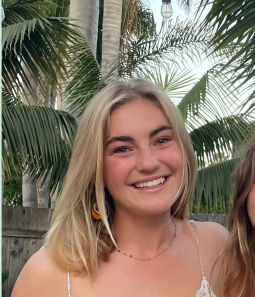 Maggie Doyle (she/her)
Maggie Doyle (she/her)
Undergraduate researcher
Maggie is an Environmental Studies major receiving her bachelor in science at UCSB. She is interested in a warming climate and its effects on the smaller organisms around us. She has been working as an assistant on a project which explores the beneficial effects of mycorrhizal fungi on Valley Oak trees during a time of drought. She also has been studying the effects of warming ocean waters on a simple predator and prey relationship between the microbes Isochrysis galbana and Oxyrrhis marina. Outside of the lab, Maggie enjoys hiking, surfing, reading and cooking.
 Meredith Honig
Meredith Honig
Technician
mahonig ‘at’ ucsb.edu
Meredith joined the lab as a technician to work on research focused on understanding the adaptive evolution of mixotrophic species in response to different environmental conditions. She earned her B.S. from UC Davis in Wildlife, Fish and Conservation Biology. Throughout her undergraduate career and beyond, Meredith has worked in various lab and field research settings, including social behavior in sharks, hummingbird disease ecology, wildlife genetics, and cheetah conservation and management. Meredith is interested in community ecology and how environmental stressors or anthropogenic disturbances influence the structure and functioning of ecological communities. Outside of the lab, Meredith enjoys reading, attempting to teach her cat how to walk on a leash, hiking, petting dogs, and birding.
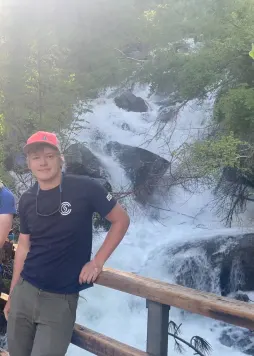 Jonatan Kaare-Rasmussen
Jonatan Kaare-Rasmussen
Undergraduate Researcher
Jonatan is a Computer Science major in the College of Creative Studies at UCSB. He is currently exploring the applications of Computer Science in Biological modeling through a set of agent based models. He is currently focusing on modeling the symbiotic relationship between cleaner shrimp and various coral fish. Specifically, the project focuses on how differences in fish behavior and sensory perception impacts the distribution of cleaner shrimp across a coral reef. He is also working with Machine Learning and Computer Vision to improve and automate the process of cataloging and interpreting biological data from images. Outside of his research, Jonatan can either be found skiing, or dreaming about skiing.
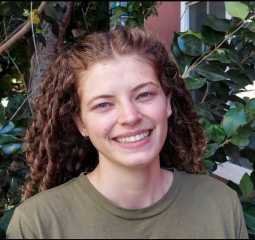 Ronja Keeley (she/her)
Ronja Keeley (she/her)
Undergraduate Researcher
Ronja is an Environmental Studies major who is interested in ectomycorrhizal symbiosis and community ecology. She is working on a project exploring the relationship between Valley Oaks (Quercus lobata) and fungi. Specifically, her project examines whether microbial communities from arid sites are more helpful to oak seedlings than communities from mesic sites under drought conditions. Ronja’s other interests include Indigenous land management, restoration, and classical music. Outside of an academic setting Ronja enjoys hiking, mushroom hunting, birdwatching, reading, capoeira, and gardening.
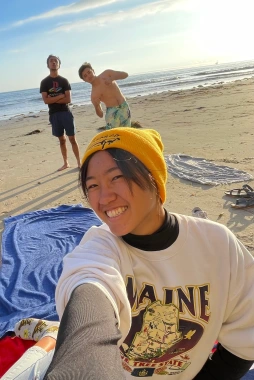 Jessilin Lee
Jessilin Lee
Undergraduate Researcher
Jessilin is a Cell and Developmental Biology major at UCSB and is fascinated by the intersection between evolutionary ecology and climate change and how discoveries made with microscopic organisms could be applied on the global scale. They are assisting in projects studying the adaptive evolution of mixotrophic strains in response to warming ocean temperatures. Jessilin is interested in how mixotrophs could be harnessed as a carbon sink to prevent warming oceans from further impacting climate change. Besides research, Jessilin also has a passion for graphic design and in their free time can be found frolicking on trails or tide pooling along the beach.
 Dr. Suzana Leles, Ph.D.
Dr. Suzana Leles, Ph.D.
Simons Foundation Postdoctoral Fellow
leles ‘at’ usc.edu
Google Scholar
Suzana is a biological oceanographer. She studied Oceanography at the State University of Rio de Janeiro (UERJ) in Brazil. Suzana found herself most curious about what she couldn’t see – the ecological interactions within the microbial world. And she wanted to turn these into mathematical equations. During her Master’s in Ecology at the Federal University of Rio de Janeiro (UFRJ), she worked with Dr Gisela Figueiredo and started applying mathematical models to study plankton trophodynamics. Through the Brazilian program Science Without Borders, she was able to cross the Atlantic to pursue a PhD at Swansea University and the Plymouth Marine laboratory, in the UK, working with Prof Kevin Flynn and Dr Aditee Mitra on models of mixotrophic plankton. After that it was time for the Pacific – Suzana moved to USC to work with Dr Naomi Levine developing proteome allocation models for phytoplankton. Now, also working in the Moeller Lab, Suzana will combine models and experimental evolution to investigate the relationships between mixotrophy, cell size, and warming. Besides science, Suzana likes dogs (hikers or couch potatoes) and enjoys campervan life on the weekends.
 Holly Moeller (she/her)
Holly Moeller (she/her)
Principal Investigator
holly.moeller ‘at’ lifesci.ucsb.edu
Website / Google Scholar
2022 Quanta Magazine profile
Holly is a theoretical ecologist who uses mathematical and empirical approaches to understand acquired metabolism. Originally trained as a photophysiologist and phytoplankton ecologist, she built her mathematical toolkit as a masters student working on marine reserve bioeconomics. As a PhD student with Dr. Tadashi Fukami (and co-advised by Dr. Peter Vitousek), she studied the ancient and diverse metabolic mutualism between trees and ectomycorrhizal fungi. Holly spent most of her postdoctoral tenure as an NSF Postdoctoral Research Fellow at the Woods Hole Oceanographic Institution, studying acquired metabolism in plankton with Drs. Michael Neubert and Matthew Johnson. She was also briefly a Biodiversity Research Centre Postdoctoral Fellow at the University of British Columbia, before moving to UCSB. In addition to her scientific work, Holly is a bit of a ‘math evangelist,’ who tells everyone that she meets about the vital role of mathematics in biology.
 Dr. Ferdinand Pfab, Ph.D.
Dr. Ferdinand Pfab, Ph.D.
Postdoctoral Scholar
ferdinand.pfab ‘at’ gmail.com
Google Scholar
Ferdinand is a mathematical biologist. He started out his career very practically, guiding canoe tours in Turkey on a small river floating from the Taurus Mountains to the Mediterranean Sea. He then went on to study Biology and Mathematics at the Ludwig-Maximilians-University in Munich, Germany, and the Çukurova University in Adana, Turkey. For his Masters thesis, he worked with Prof. Wilfried Gabriel on models for phenotypic plasticity. After that, he moved to Italy, where he earned a PhD in Mathematics at the University of Trento. For his PhD thesis he worked with the groups of Prof. Andrea Pugliese (University of Trento), Prof. Gianfranco Anfora (Edmund Mach Foundation, Trento) and Prof. Vaughn Walton (Oregon State University, USA). His thesis was about population dynamics of invasive insect species and biological control programs. He then came to UCSB, where he started working with the groups of Prof. Cherie Briggs and Prof. Roger Nisbet on population and disease dynamics, evolution in changing environments and dynamic energy budget models. Finally, he joined the Moeller lab, where he is modeling the metabolism and epigenetic adaptations of corals and their algal symbionts. When Ferdinand is not working on models, he likes to admire the beauty of nature. He is also always curious to learn about different cultures and languages around the world.
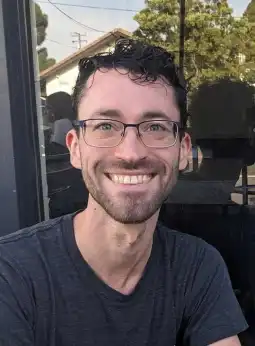 Dr. Zach Reitz, Ph.D. (they/them)
Dr. Zach Reitz, Ph.D. (they/them)
Postdoctoral Scholar
zlreitz ‘at’ ucsb.edu
Google Scholar
Zach is a bioinformatician and bioinorganic chemist interested in the chemistry and biology of bacterial specialized metabolism. They originally trained as a synthetic organic chemist at Penn State before moving to Santa Barbara to escape winter for a Ph.D. in chemistry. Working under Prof. Alison Butler, Zach studied metallophores—molecules that bacteria use to scavenge trace metals from their environment—and developed computational methods to accelerate metallophore discovery. They then moved to the Netherlands for a postdoc with Prof. Marnix Medema at the Wageningen University Bioinformatics Group, where they developed software for predicting gene function from bacterial (meta)genomes and (meta)transcriptomes. Zach is now back at UCSB, working with Holly and Prof. Stephen Proulx to explore how metallophores evolve and persist as a public good. When not thinking about metallophores, Zach enjoys circus arts, sailing, and working in their garden.
 Gabe Runte
Gabe Runte
Ph.D. Candidate
gabe.runte ‘at’ lifesci.ucsb.edu
Gabe is interested in plant-fungal symbioses and their role in creating the plant communities that dominate landscapes. He utilizes greenhouse and landscape studies to investigate mycorrhizal benefit in varying environmental contexts. Gabe’s current work focuses on the Southern California endemic Big Cone Douglas Fir (Pseudotsuga macrocarpa), in a collaborative project with the US Forest Service, aiming to understand fungal effects on reforestation success. Prior to joining the lab, Gabe worked under Dr. Carla D’Antonio, also at UCSB, as an undergraduate researcher and as a technician. He received a REU to study mycorrhizas in the wet forests of Hawaii and returned to work with US Geological Survey collaborators the following summer. Gabe is co-advised by Ryoko Oono.
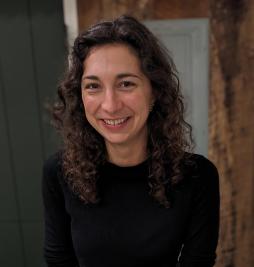 Dr. Bethany Stevens, Ph.D.
Dr. Bethany Stevens, Ph.D.
Postdoctoral Researcher
bstevens ‘at’ ucsb.edu
Google Scholar
Bethany is a mathematical ecologist interested in the mechanisms that generate patterns in functional diversity. She received her PhD in Biological Oceanography from the Massachusetts Institute of Technology and Woods Hole Oceanographic Institution. Through a combination of field work and structured population modeling, she studied the local dynamics of picophytoplankton (the smallest, most abundant photosynthetic organisms in the world) and identified environmental controls on their abundance as they varied across space and time. In the Moeller Lab, she hopes to develop spatial models of mutualisms between trees and ectomycorrhizal fungi to investigate the maintenance of different interaction strategies within a community. Bethany is grateful to the professors at Rice University who persuaded her to use her degree in mathematics to study ecology, and to her PhD advisors, Heidi Sosik and Michael Neubert, who helped her develop the skills to do so.
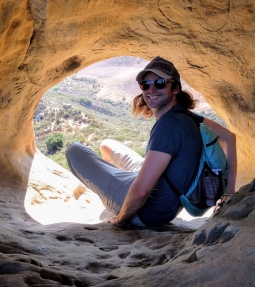 Edward Sweeney
Edward Sweeney
Research Affiliate / Surf Scout
edward.sweeney ‘at’ noaa.gov
Ed is an oceanographer and educator with research foci in seafloor mapping and biological oceanography. He earned his Bachelors in Geology from Bowdoin College, where he mapped glacial marine sediments in Casco Bay, Maine, and his Masters in Earth Science from the University of New Hampshire’s Center for Coastal and Ocean Mapping. Ed has worked as a geologist in both private and governmental sectors, and has extensive experience with outdoor education through his sailing career with the Sea Education Association, and experiential education with the Santa Barbara Museum of Natural History Sea Center. In addition to his primary lab duties of oceanographic data analysis and construction of miscellaneous lab equipment, Ed holds down a day job as a Marine Spatial Ecologist at the National Oceanic and Atmospheric Administration.
Lab Alumni
[[Biographies of some former lab members]]
Postdoctoral Researchers
Alexandra Brown (2019-2022). Presently: Postdoctoral Researcher, UC Berkeley
Laura Bogar (2019-2022). Presently: Assistant Professor, UC Davis
Christopher Paight (2020-2023). Presently: Data scientist and Navy contractor
Graduate Students
An Bui, M.S., 2021. Presently: Ph.D. Student in Stier Lab, UCSB
Sevan Esaian, Ph.D. Student (2018-2021). Presently: Ph.D. Student in Wilbanks Lab, UCSB
Michelle Lepori-Bui, M.S., 2022. Presently: Marine Water Quality Specialist, Washington Sea Grant
Technical Staff
Gina Barbaglia (2023). Presently: Physician’s assistant, Santa Barbara
Ean Eberhard (2020-2021)
Ryan Marczak (2021). Presently: Research Associate, Agilent
Isobel Mifsud (2021-2022). Presently: Field course instructor, Stanford University
Andreas Norlin (2021-2023). Presently: Ph.D. student, University of South Florida
Nicole Wallace (2021). Presently: VitroLabs
Undergraduate Researchers
Safiya Alavi (2022-2023). Presently: Data scientist. Moeller Lab Project Website
Gina Barbaglia (2021-2023). Presently: Physician’s assistant, Santa Barbara
Ethan Baxter (2019-2023). Presently: Ph.D. student in Mathematics, Northwestern University
Grace Casarez (2018-2021). Presently: M.S. Student in Mathematics, Stanford University
Tianyi Chu (2021-2022). Presently: M.S. Student in Bioinformatics, Yale University
Aubrey Chuen (2021-2023)
Carles Falcó i Gandia (2018-2019). Presently: Ph.D. Student in Mathematics, Oxford University
Ileana Fenwick, REU Student (2019). Presently: NSF Graduate Fellow and Ph.D. Student in Biology, UNC Chapel Hill
Logan Gonzalez (2018-2020). Presently: Researcher, Cold Regions Research & Engineering Laboratory
Veronica Hsu (2017-2021); Goldwater Scholar (2020). Presently: Ph.D. student in Immunology, Harvard
Kelsey Husted (2018-2020)
Jagger Joyner (2020-2022). Presently: Researcher, Santa Barbara Botanic Garden
Jakob Kaare-Rasmussen (2021-2023). Presently: Ph.D. student, Population Biology, UC Davis
Josephine Kaminaga (2022-2023). Presently: Undergraduate, UCSB
Kristen Klitgaard (2019-2020). Presently: Applied Research Lead, Beeflow
Bailey McKernan (2021-2023)
Conner Mertz (2018-2019). Presently: NSF Graduate Fellow and Ph.D. Student in Biology, Univ. of New Mexico
Alex Smith, Undergraduate Researcher (2019-2020) and Technician (2020-2021). Presently: Masters Student in Biology, University of Colorado Denver
High School Interns
Ethan Chau (2017-2019). Presently: Undergraduate, UCLA
Gone But Not Forgotten
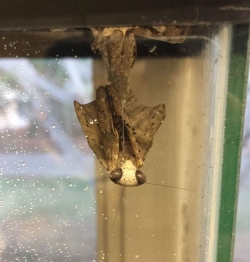 Morticia (f.k.a. Morty)
Morticia (f.k.a. Morty)
Lab Pet (2018-2019)
Now a specimen at the Cheadle Center
Morticia, a dead-leaf mantis, joined the Moeller lab in the summer of 2018. Before that, she had experience in behavioral ecology as part of the Pruitt Lab, where she assisted in teaching undergraduates experimental research techniques. In a study of whether behavior predicted attack rates, her species was the only one whose behavior patterns were significant. Her other interests included hunting and eating crickets, slurping up water droplets, and hanging upside down staring out the window. She went on to be the longest lived of all the mantids in her cohort, passing away surrounded by her friends on March 15, 2019.